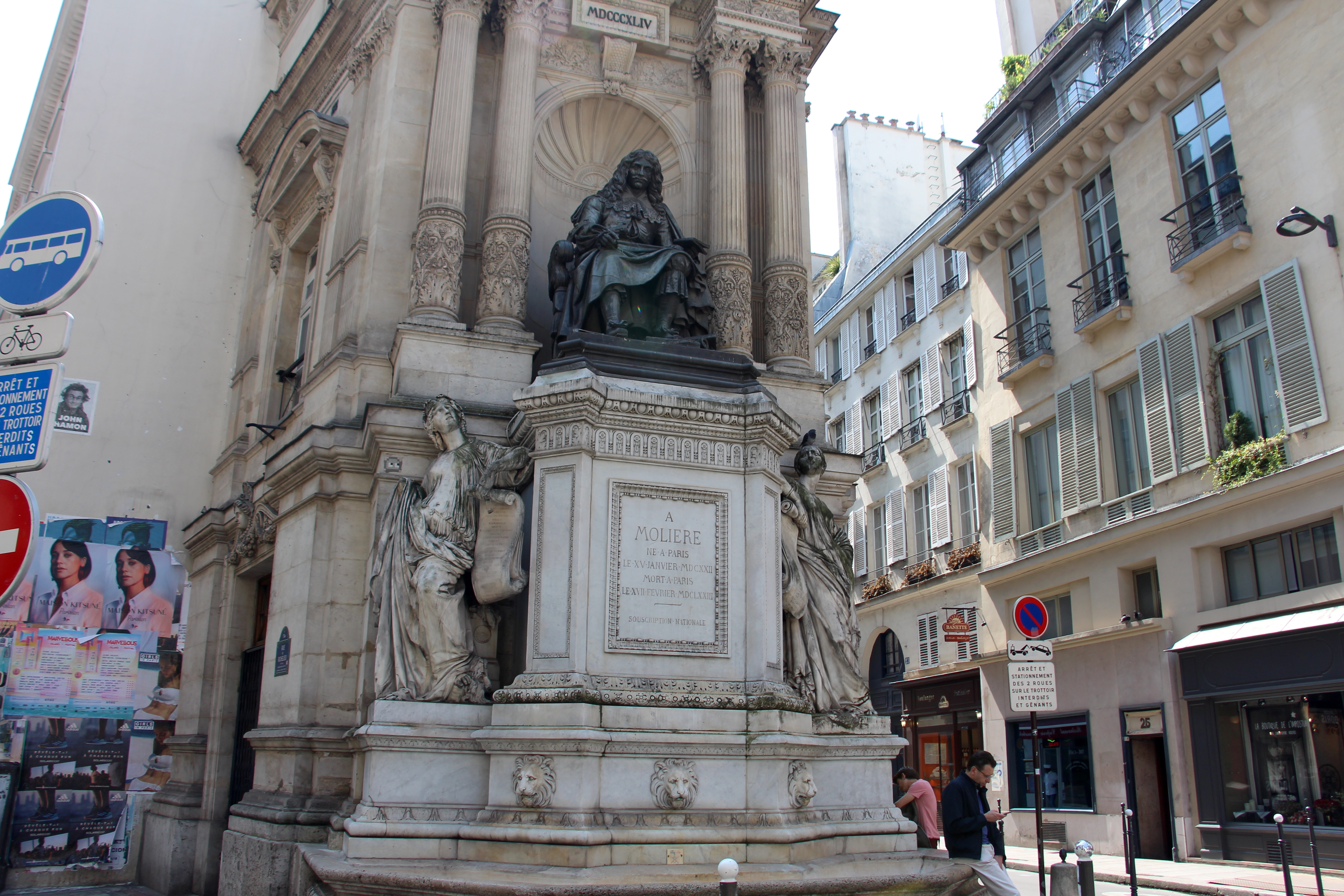1. Jean-Baptiste Poquelin, better known as Molière, is one of France’s most famous playwrights, dubbed the founding father of the five-act French comedy and the man who penned Tartuffe and The Misanthrope. A born-and-raised Parisian, crumbs of Molière’s short but prolific life and career can be glimpsed throughout the city.
2. A bust in his likeness overlooks the rue Saint-Honoré from the building that was erected atop his birthplace. His prominent nose features quite heavily in any image of him: in fact, “le nez” (the nose) was his family nickname.
3. On the rue de Buci, a café bears Molière’s stage name: it was in this building that Poquelin took it as a concession to his upper class father, who would have been shamed by having an actor bear his name.
4. Located just behind the Louvre, the Comédie Française is known today as the Home of Molière, despite being built over a century after the playwright’s death. His plays are performed here more than the works of any other playwright, and rare is the day when there are not words by Molière being spoken here.
5. Molière met his demise at the age of 51, following a long bout with pulmonary tuberculosis. It was on stage playing the titular hypochondriac in The Imaginary Invalid that Molière was seized by a coughing fit. While he was able to finish the play, he collapsed and died a few hours later. He is interred at Père Lachaise just next to fabulist Jean de la Fontaine. But this is not Molière’s original burial place. First buried in the part of a local cemetery reserved for unbaptized infants, thanks to a concession from the King overriding a rule that forbade actors from being buried in sacred ground, Molière was only moved here in 1817 as part of a marketing ploy to improve the reputation of what was then an undesirable place of rest.




